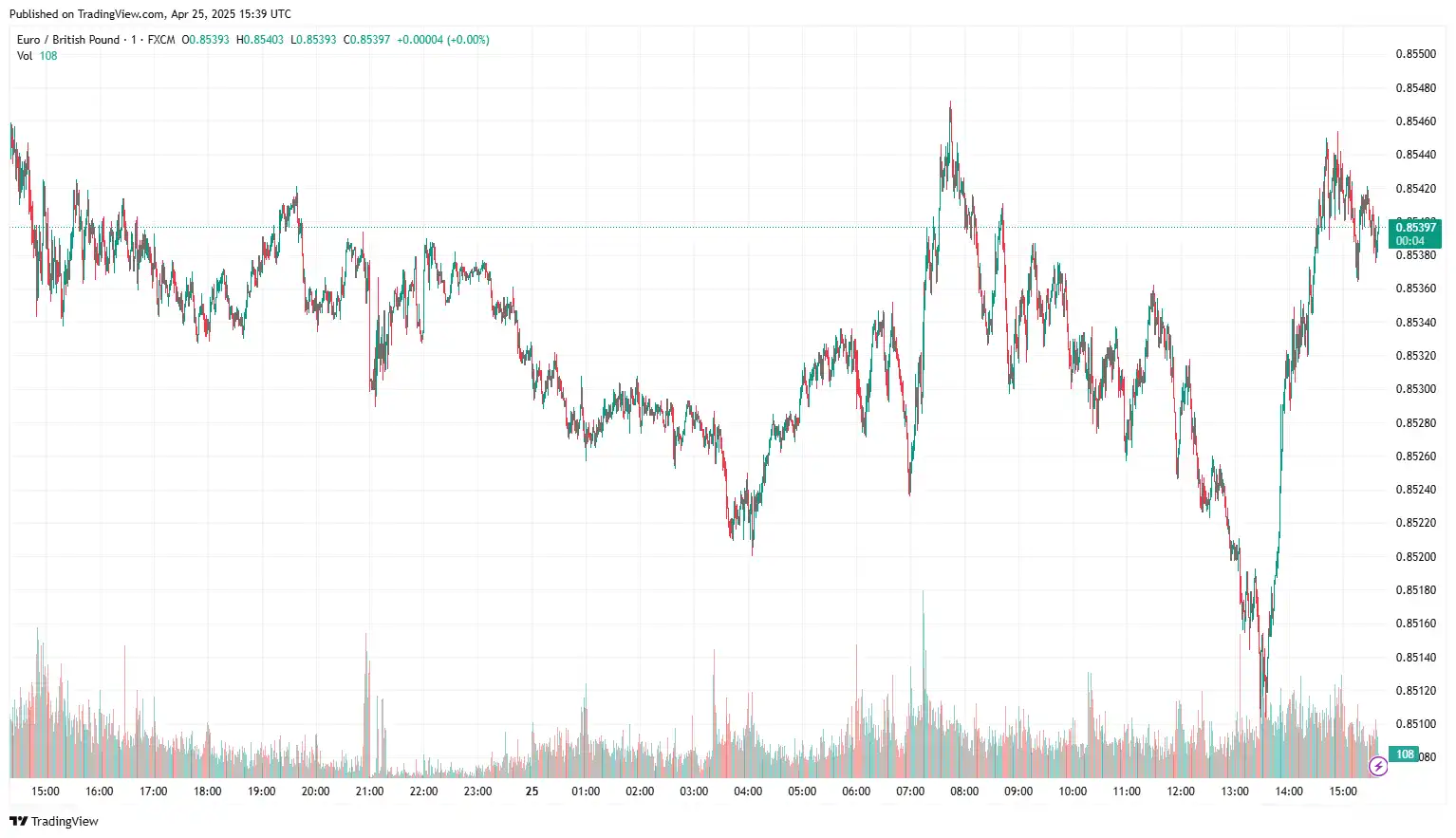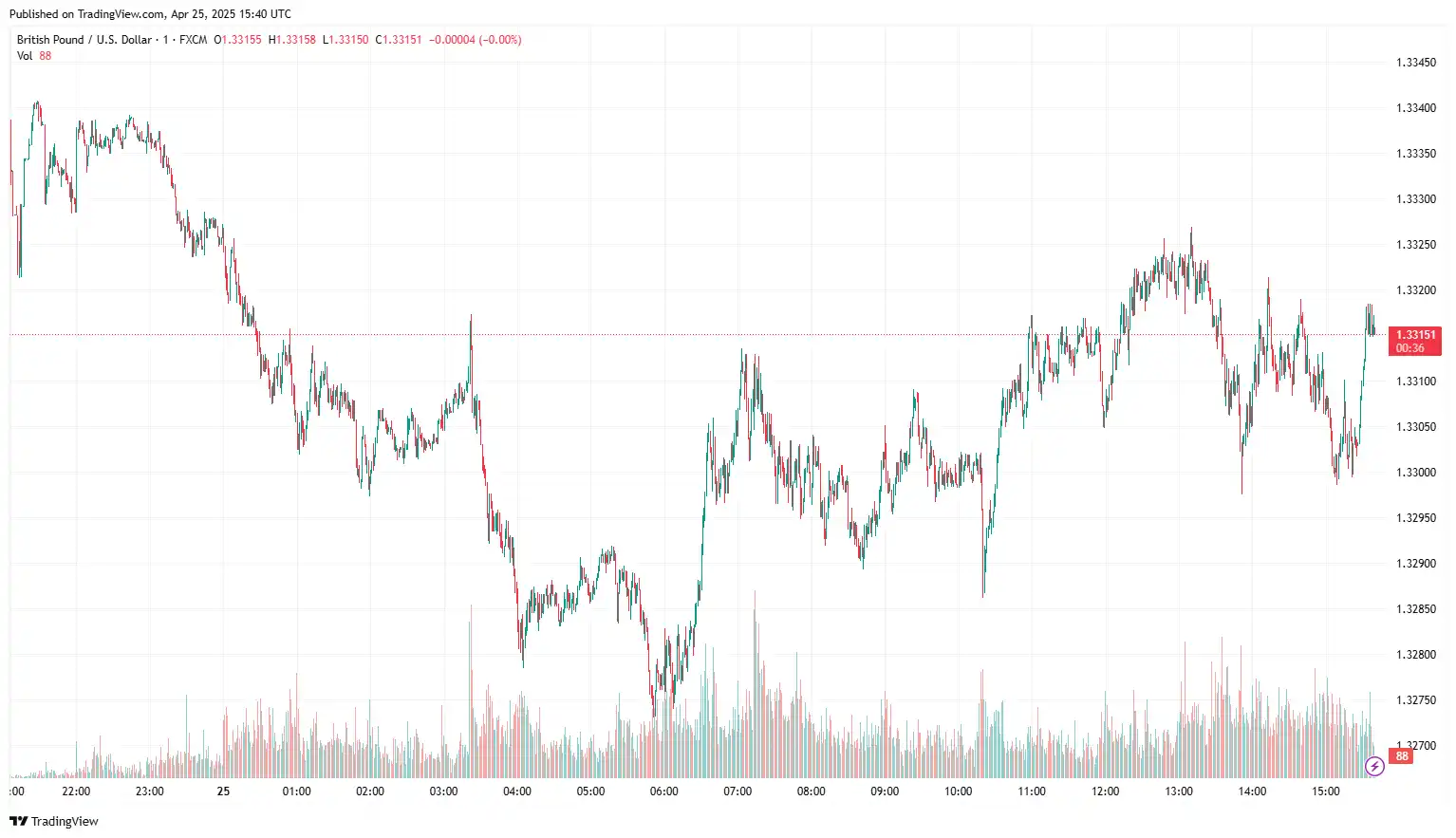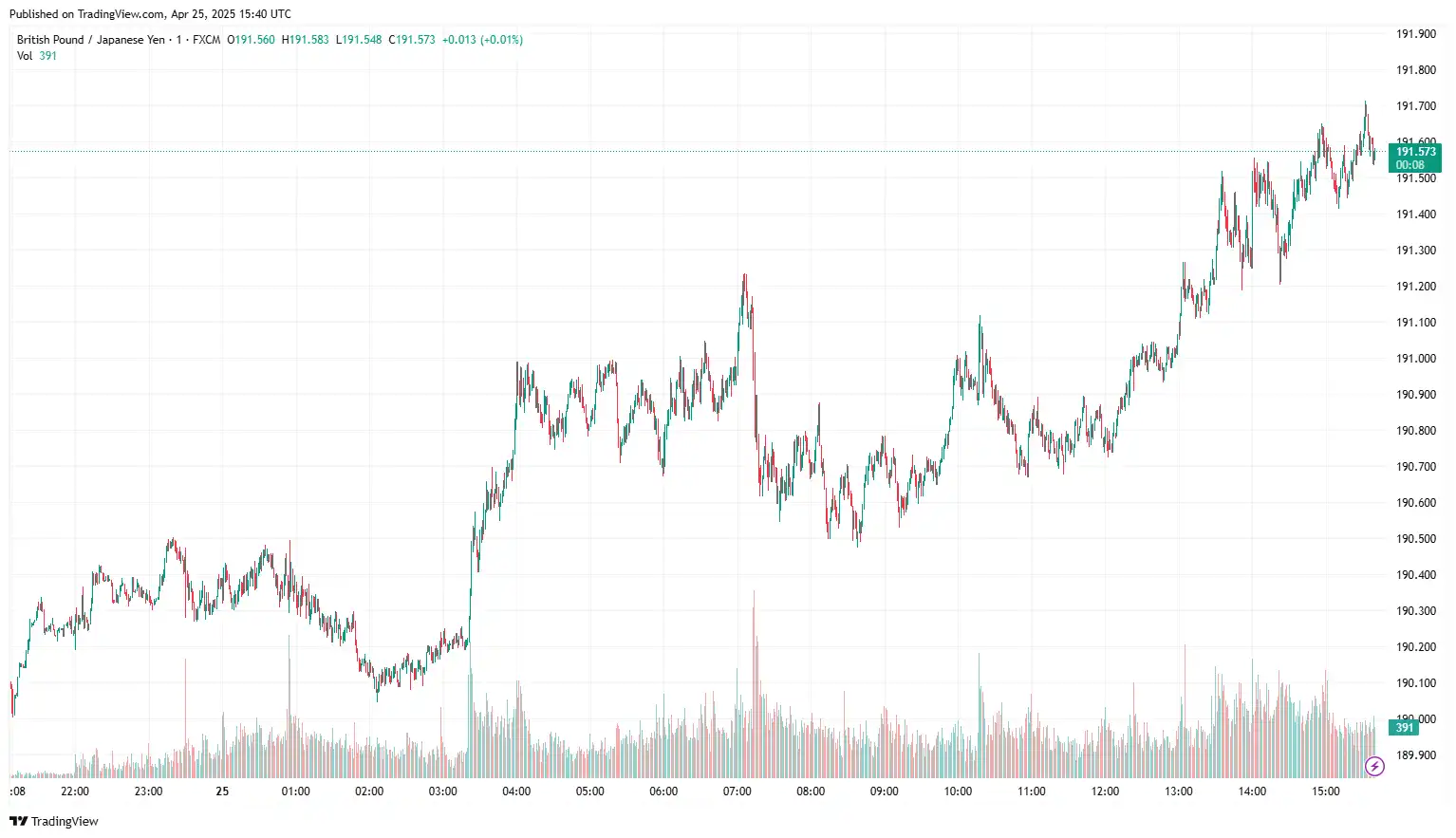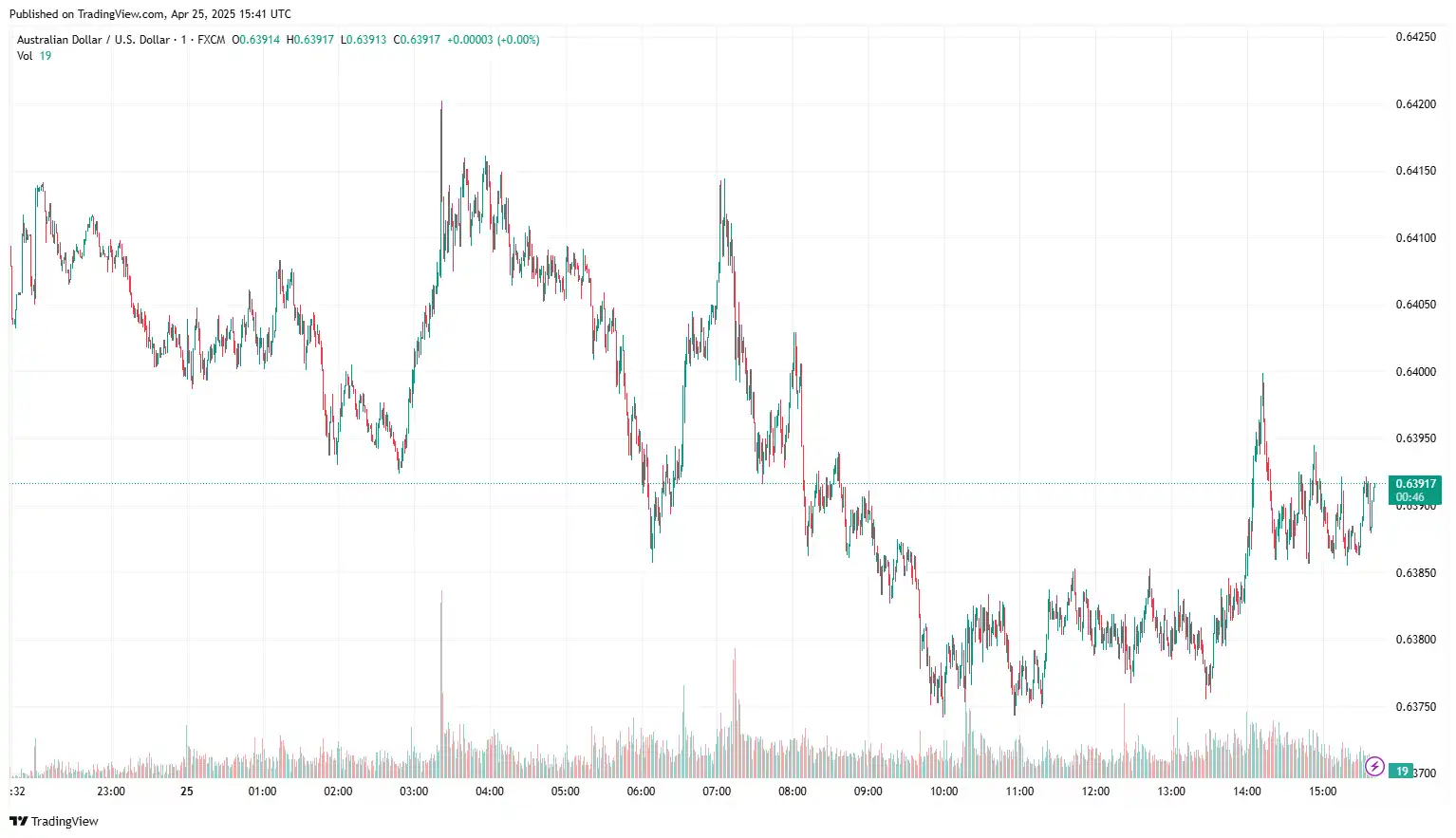EUR/GBP Sinks After Upbeat UK Retail Sales Data
EUR/GBP softened near 0.8537 as stronger-than-expected UK economic data supported the pound. UK Retail Sales increased by 0.4% MoM in March, compared to a rise of 0.7% previously (revised from 1.0%). This figure exceeded the market consensus of a decline of 0.4%. Annually, Retail Sales surged by 2.6% in March, up from a rise of 2.2% previously and surpassing the estimate of 1.8%. The seasonally adjusted S&P Global/CIPS UK Manufacturing Purchasing Managers' Index (PMI) dropped to 44 in April, down from March's 44.9, signifying an unexpected contraction in overall business activity. This result aligned with the market consensus of 44 for the period.
Furthermore, the Preliminary UK Services Business Activity Index decreased to 48.9 in April, falling from 52.5 in March, indicative of increasing global economic uncertainty and declining domestic demand, which was below the anticipated 51.3. On the economic front, Bank of England (BoE) Governor Andrew Bailey expressed concerns over economic growth, stressing the need for consideration of ‘trade war risk’. He also added, “We do have to take very seriously the risk to growth. We’re currently working through that because we’ve got an interest rate decision coming in two weeks’ time.” Rising market speculation that the BoE will reduce its interest rate by 25bps to 4.25% in the May policy meeting is adding market volatility to sterling. For the remainder of the year, the IMF anticipates three interest rate cuts by the BoE and has revised the UK Gross Domestic Product (GDP) growth for 2025 to 1.1%, down from the previously projected 1.6%, amid worries of global fallout due to Trump’s international policies.
On the Euro’s front, the European Central Bank (ECB) policymakers’ dovish remarks and market sentiment surrounding the US-UK trade talks undermined the shared currency. On Thursday, Olli Rehn, an ECB policymaker and governor of the Finnish central bank, stated that the central bank shouldn't dismiss the possibility of a "larger interest rate cut." In contrast, Madis Muller, a member of the ECB Governing Council, indicated on Wednesday that the bank might need to reduce interest rates to levels that encourage economic growth if trade uncertainty adversely affects growth. On the data front, business sentiment in Germany improved slightly in April, with the IFO Business Climate Index rising to 86.9 from 86.7 in March. This reading exceeded the market expectation of 85.2. Other details of the report indicated that the IFO Current Assessment Index increased to 86.4 from 85.7 in the same period, while the Expectations Index dipped slightly to 87.4 from 87.7.
Investors will look forward to the trade negotiations between UK Chancellor of the Exchequer Rachel Reeves and Washington for further insights on the EUR/GBP exchange rate.

GBP/USD Dented by UK Retail Sales Release
GBP/USD drifts lower near 1.3300, following better-than-expected UK retail sales figures. UK retail sales increased by 0.4% month-on-month (MoM) in March after advancing by 0.7% in February, according to the latest data published by the Office for National Statistics (ONS) on Friday. Markets had anticipated a 0.4% decline for the reported month. Core retail sales, excluding motor fuel sales, rose by 0.5% MoM, compared to the previously revised growth of 0.7% and the estimated -0.3% reading. Annual retail sales in the UK rose by 2.6% in March, up from February’s 2.2%, while core retail sales grew by 3.3% in the same month compared to a previous revision of 1.8%. Both readings exceeded market expectations. GfK Consumer Confidence in the United Kingdom (UK) fell to -23 in April—its lowest level since November 2023—amid rising living costs and increasing global trade concerns, missing forecasts of -22.
Moreover, growing uncertainty regarding the global economic outlook due to President Trump’s tariff announcement earlier this month and slower-than-expected Consumer Price Index (CPI) data for March could influence the BoE’s monetary policy stance. In the International Monetary Fund’s Spring Meetings in Washington, BoE Governor Andrew Bailey warned that the central bank must take the risk to economic growth from global trade disruptions very seriously, adding, 'Fragmenting the world economy will negatively impact growth. The UK operates as an open economy, so the US's relationship with the rest of the world is significant. We must seriously consider the risk to growth. China has experienced a prolonged period of weak household domestic demand, which is not sustainable indefinitely. The Bretton Woods system is the best one we have, but it faces challenges.'
On the other hand, Thursday’s release of Initial Jobless Claims data exerted selling pressure on the greenback. The US Department of Labour reported that claims rose to 222,000 for the week ending April 19, slightly surpassing predictions and increasing from the previous week’s adjusted figure of 216,000. Simultaneously, Continuing Jobless Claims fell by 37,000, resulting in a total of 1.841 million for the week ending April 12. On Thursday, Minneapolis Fed President Neel Kashkari emphasised the potential for future layoffs amid ongoing uncertainty. While he noted that there hasn’t been a noticeable increase in layoffs yet, some businesses are reportedly preparing for that possibility if uncertainty continues. Kashkari added that resolving trade tensions could alleviate concerns and support a more optimistic outlook.
In today’s session, the meeting between UK Finance Minister Rachel Reeves and US Treasury Secretary Scott Bessent, along with US Michigan Consumer Sentiment data, will influence market sentiment regarding the GBP/USD exchange rate.

GBP/JPY Rebounds After Tokyo Consumer Price Index
GBP/JPY recovered near 190.54 as rising optimism around the US-China trade deal negotiations undermined safe-haven demand, dragging the Japanese Yen lower. However, growing market anticipation that the Bank of Japan (BoJ) would increase interest rates continued following the recent stronger-than-anticipated inflationary numbers. The Tokyo Consumer Price Index (CPI) for April climbed 3.5% YoY, compared to 2.9% in the previous month, as reported by the Statistics Bureau of Japan on Friday. Meanwhile, the Tokyo CPI, excluding fresh food and energy, came in at 2.0% in April versus 1.1% in March. Additionally, the Tokyo CPI excluding fresh food rose 3.4% YoY in April, against the 3.2% expected, and up from 2.4% in the prior month. Japan's Finance Minister Katsunobu Kato expressed disappointment to the G7 countries on Thursday regarding US tariffs, which are causing uncertainty in the financial markets. In addition, Japan's Economic Revitalisation Minister Ryosei Akazawa is set to visit the US for discussions on tariffs starting April 30. Last week, Bank of Japan Governor Kazuo Ueda indicated that the central bank might need to implement policy measures if US tariffs adversely affect the Japanese economy. Furthermore, reports indicate that the BoJ plans to lower its economic growth projections and highlight rising risks stemming from Trump's extensive trade tariffs.
Conversely, stronger-than-expected UK economic data bolstered the pound. In March, UK Retail Sales rose by 0.4% month-on-month, compared to an upwardly revised increase of 0.7% (previously reported as 1.0%). This result outperformed the market expectation of a 0.4% decline. On an annual basis, Retail Sales jumped by 2.6% in March, higher than the previous increase of 2.2% and exceeding the forecast of 1.8%. On the economic front, Bank of England (BoE) Governor Andrew Bailey voiced concerns regarding economic growth, highlighting the need to consider the ‘trade war risk.’ He also stated, “We do have to take very seriously the risk to growth. We’re currently working through that because we’ve got an interest rate decision coming in two weeks’ time.” Increasing market speculation suggests that the BoE may cut its interest rate by 25bps to 4.25% during the May policy meeting, which adds volatility to the sterling. For the rest of the year, the IMF predicts three interest rate cuts by the BoE and has adjusted the UK's Gross Domestic Product (GDP) growth forecast for 2025 to 1.1%, down from the earlier estimate of 1.6%, due to concerns over global repercussions stemming from Trump’s international policies.
Broader market sentiment around the US-UK trade talks and safe-haven demands will drive the GBP/JPY exchange rate.

AUD/USD Gained on USD Weakness
AUD/USD climbed near 0.6387 amid mixed market sentiment due to persistent US-China trade tensions. On Friday, China's Finance Ministry noted that global economic growth remains sluggish due to ongoing tariffs and trade wars, which are hindering economic and financial stability. The ministry called for all parties to strengthen the international economic and financial system by boosting multilateral cooperation. Easing US-China tensions boosts hopes for de-escalating the trade war and supports a positive risk tone. US President Donald Trump stated Thursday that trade talks are ongoing, and China is reportedly considering suspending its 125% tariff on some US imports. On the domestic front, the Judo Bank Manufacturing PMI decreased to a two-month low of 51.7 in April, down from 52.1 in March. While manufacturing output continued to show expansion, the rise in new orders was modest. Meanwhile, the Services PMI slightly declined to 51.4 from 51.6 in the previous month, and the Composite PMI also fell to 51.4 from 51.6. Moreover, the market anticipates that the Reserve Bank of Australia (RBA) will reduce interest rates by 25bps in an upcoming policy meeting, which will fluctuate the Aussie.
On the other hand, despite stronger-than-expected Durable Goods Orders, uncertainty around US-China trade talks and the broader tariff situation continues to affect market sentiment around the greenback. On Thursday, the US Census Bureau announced a 9.2% increase in Durable Goods Orders in March, amounting to $26.6 billion and totalling $315.7 billion. This growth follows a 0.9% rise reported in February and significantly exceeds market expectations of a 2% increase. Additionally, the US Department of Labour (DOL) reported a rise in new unemployment insurance applications to 222K for the week ending April 19, slightly above initial estimates and higher than the previous week's revised count of 216K (up from 215K). The report also indicated a seasonally adjusted insured unemployment rate of 1.2%, with the four-week moving average dropping by 750 to 220.25K from the prior week’s revised average. Furthermore, Continuing Jobless Claims fell by 37K to 1.841M for the week ending April 12. On Thursday, Federal Reserve Governor Christopher Waller expressed his support for an interest rate reduction if tariffs negatively impact the job market. In a separate statement, Cleveland Fed President Beth Hammack mentioned that a rate cut could occur as early as June if clear signs of economic movement are observed.
In today’s session, broader uncertainty in global markets over US-China trade talks will drive the AUD/USD exchange rate.

Stay Ahead in the Currency Game
Whether you're a daily FX trader or handle international transactions regularly, our 'Currency Pulse' newsletter delivers the news you need to make more informed decisions. Receive concise updates and in-depth insights directly in your LinkedIn feed.
Subscribe to 'Currency Pulse' now and never miss a beat in the currency markets!
Ready to act on today’s insights? Get a free quote or give us a call on: +44 (0)20 7740 0000 to connect with a dedicated portfolio manager for tailored support.
Important: This blog is for informational purposes only and should not be considered financial advice. Currency Solutions does not consider individual investment goals, financial circumstances, or specific requirements of readers. We do not endorse or recommend any particular financial strategies or products discussed. Currency Solutions provides this content as is, without any guarantees of completeness, accuracy, or timeliness.




